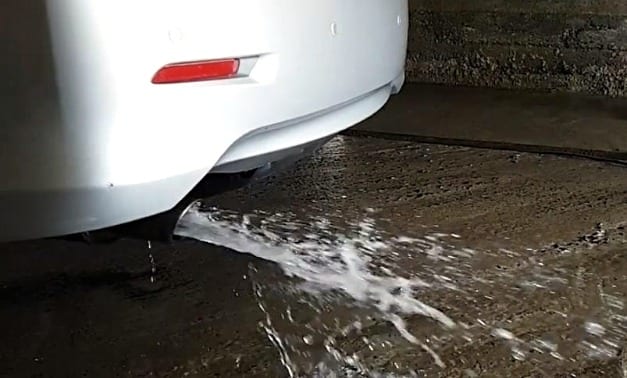
Water in the silencer: where is it from and is it normal?
Content
Almost every driver found it amusing when a liquid suddenly started pouring from the exhaust pipe in front of a standing foreign car. The owner of an old car caused a special grin. Like, and new cars go bad.
In fact, not a single car is protected from the appearance of water in the resonator. Let's try to figure out why this happens. If this is scary, then how to fix the problem?
How water enters the silencer
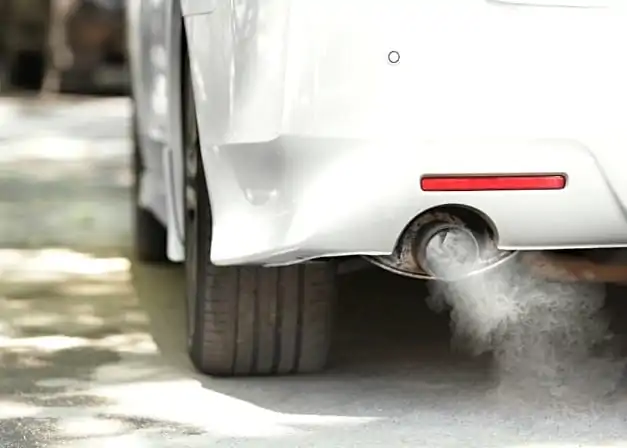
The first question that needs to be clarified is where the water comes from in the pipe. There are several answers to it. And all of them will be correct. Here are the main causes of moisture in the exhaust:
- combustion product of liquid fuels;
- temperature difference;
- external sources.
The natural process
The process of moisture formation during the burning of liquid fuel is a natural side effect of any internal combustion engine. The fact is that the composition of gasoline, or diesel fuel, in small quantities includes water. Otherwise, the fuel would have to be poured into the gas tank with a dustpan, like coal.
During combustion, the fuel changes its composition, but still partially remains in the form of a liquid. Therefore, during engine operation, the exhaust system of the car is replenished with an additional portion of moisture. In part, it manages to be removed from the system in the form of steam. However, when the engine is calm, everything that remains in the pipe remains in it. The cooled steam forms droplets that drain into the tanks.
Condensation

A common experiment from the first lessons of physics. A cold container is taken out of the refrigerator into a warm room. On its walls, regardless of the contents, small droplets form. And until the tank heats up to ambient temperature, the droplets will increase.
Something similar can happen not only in winter, but also in summer. In physics, there is another concept explaining the appearance of water in a silencer. This is the dew point. Drops form on the surface that separates hot air from cold air. In the exhaust system of the machine, the temperature of the exhaust gas rises to several hundred degrees. And the colder the pipe, the higher the likelihood of abundant vaporization and condensation.
External sources
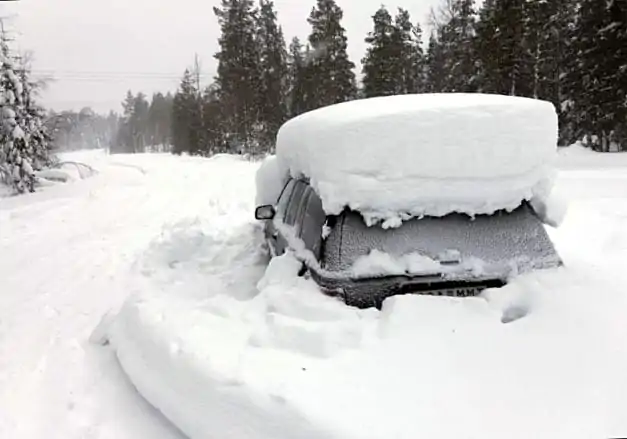
Water in the exhaust pipe may appear as a result of difficult weather conditions. Even ordinary fog contributes to this process. In winter, improper parking near a snowdrift can also cause liquid to form inside the exhaust pipe.
What threatens the water in the muffler
As you can see, the appearance of water in the exhaust pipe is a natural process. However, a large amount of it can harm the car. The most common problem (especially in domestic models) is the oxidation of the muffler. Even the highest quality stainless steel product will suffer from accumulated water. The fact is that the liquid in the pipe is not just water. It contains hazardous chemical elements. And some of them are part of sulfuric acid.
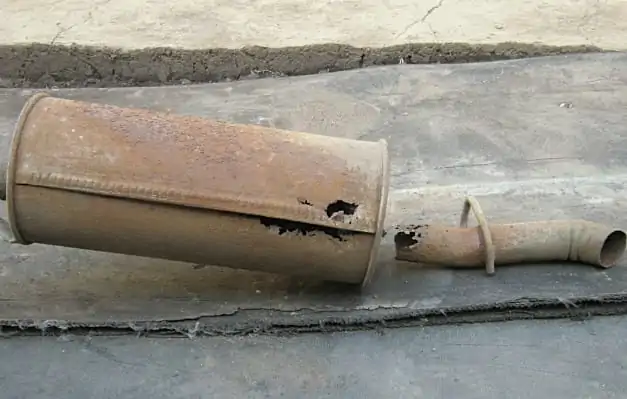
Of course, their number is negligible, but over time, constant contact with the aggressive environment will begin to destroy the cavity walls. Due to the holes formed, the car acquires a characteristic “hoarse bass”.
The second problem that the water in the silencer leads to is ice plugs. Although this is only a seasonal phenomenon, it can adversely affect engine performance.
Why and is it possible to drill a car silencer?
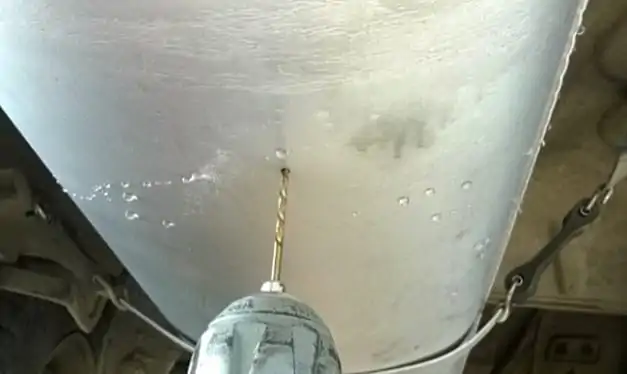
Often there is advice to drill a hole in the cavity. This method is popular among many amateur motorists. According to them, this procedure allows you to keep the muffler dry, regardless of weather conditions. For this, inventive motorists make a hole with a diameter of 2-3 millimeters. It is so insignificant that it does not affect the sound of the exhaust.
What can be said about this method? Does it somehow affect the exhaust system, and is it possible to do without it?
Is the grandfather method useful?
So some owners of domestic cars fought with water. However, any violation of the protective layer of the metal inevitably leads to premature oxidation. Therefore, over time, a small hole will turn into a huge hole, which will need to be covered with patches.
Analogs installed on foreign cars will last a little longer in this case. But even the highest quality steel will deteriorate due to acidic impurities contained in the fluid accumulated in the tank. By drilling a hole in high-quality metal, the driver himself reduces the life of the exhaust system.
How to remove moisture from a muffler?
If water drips from the exhaust pipe during engine start-up, this is a clear sign that the system tank is filled with fuel residues. How to remove it from the muffler?
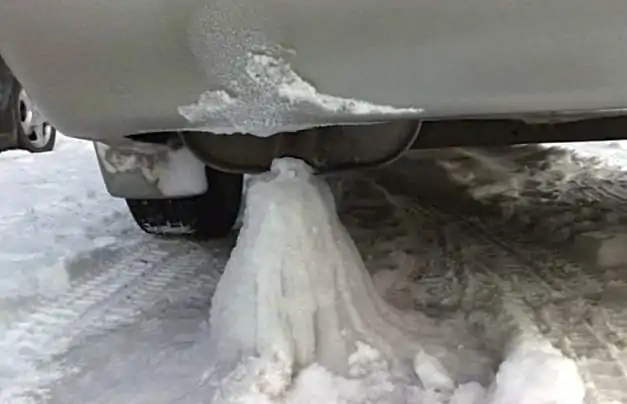
First of all, it is important to operate the car so as to minimize the formation of fluid. For example, in winter, the engine must be warmed up. This must be done at reduced speed. So the entire exhaust system will warm up smoothly. Then the car should work for at least forty minutes. Therefore, experts advise to exclude short trips in the winter.
During a long drive at high speeds, from increased temperature all the water in the exhaust system will turn into steam and will be removed by itself. This process is called muffler drying. Today it is the most effective way to remove fluid from the exhaust system.
In addition, we also offer a video on the condensate in the silencer:
Common questions:
Why is water coming out of the exhaust pipe? The composition of gasoline and diesel fuel partly includes water (the fuel is in liquid form). When fuel is burned, this water evaporates, and in a cold exhaust system it condenses and remains in the muffler. When too much water accumulates, at the start of the movement, it begins to pour out of the pipe.
Do I need to drill a hole in the muffler? Not. This procedure significantly reduces the working life of the muffler. When the protective coating breaks down, the metal corrodes faster.
How to remove condensation from the exhaust pipe? The only way to remove water from the tailpipe is to heat up the exhaust system so that the water evaporates. To do this, you need the car to run at high speed for 40 minutes or more at least once a month.
